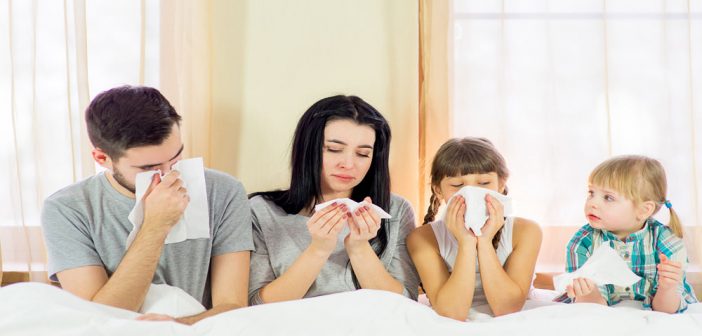Common sense tells you to stay away from someone who has the flu, especially since the particular strain of flu this year is very dangerous. But when the wheezing, sneezing person is a close friend, your spouse or one of your children, you may not have the option to isolate yourself. If you have to stay home to look after someone who is sick, how do you avoid catching the flu yourself? Here are some ways to avoid catching the flu.
Keep Yourself Fit
It’s important to keep yourself as fit and healthy as possible prior to contracting the flu. This means getting plenty of sleep, ensuring you are drinking enough fluids, eating a nutrient and vitamin rich diet and engaging in regular exercise.
Flu Shots
If someone in your home is sick with the flu, most experts recommend getting a flu shot as quickly as possible. The flu vaccine takes awhile to take effect, but the flu season lasts longer than that. You can’t get sick from the flu shot so there is nothing to lose by getting one. The best way to protect yourself is to get a flu shot before someone in your home gets sick.
Keeping Your Distance
Try to stay at least 6 feet away from anyone who has the flu. If you get closer than that, you’re in firing range whenever anyone sneezes or coughs. Of course, this can be very difficult when you’re living in a home with someone that has the flu.
Isolation Room
Set up a single room in your home for one or more sick people living there to limit your family’s interaction with these sick individuals until they get better. This can significantly reduce the chance that the flu will spread throughout your home, even if it means not sleeping with your spouse for a while.
Assign one bathroom to sick people staying in the isolation room. Visits to the isolation room should be limited, try to get multiple tasks done each time you go into the room. For example, if you’re bringing in breakfast, also bring along reading material, crossword puzzles or whatever is age-appropriate.
Lots of Hand-washing
Keeping your distance from family members that have the flu may not be an option, particularly if you have small children at home. This makes other preventative measures – such as constant handwashing – even more important. Wash before touching your face, drinking and eating and particularly after you touch surfaces inside your home that may have been contaminated. When you’re holding small children in your arms, put his/her head on one of your shoulders so coughs are aimed away from you.
Disinfect Surfaces
Use disinfecting wipes and sprays to cleanup possibly contaminated surfaces in your home. The flu virus can exist on a surface for many hours, sometimes even days. Spots that regularly get handled by both healthy and sick individuals (like the refrigerator door handle or a bathroom faucet) should be at the top of your list for disinfection.
Regularly clean any surface inside the sick room or the bathroom that was assigned to flu victims. Any utensils, dishes or cups a sick person used should be cleaned and disinfected immediately. When carrying towels, sheets or blankets to the washing machine that a sick person used, hold them away from you and make sure that you clean them using hot water.
Protective Behavior
Avoid touching your mouth, nose or eyes with your hands, these are doorways where the flu virus can your body. Many caregivers dealing with the in-house flu epidemic have a mask for themselves or the “patient.” However, there isn’t any evidence that this is actually useful in a home setting.








